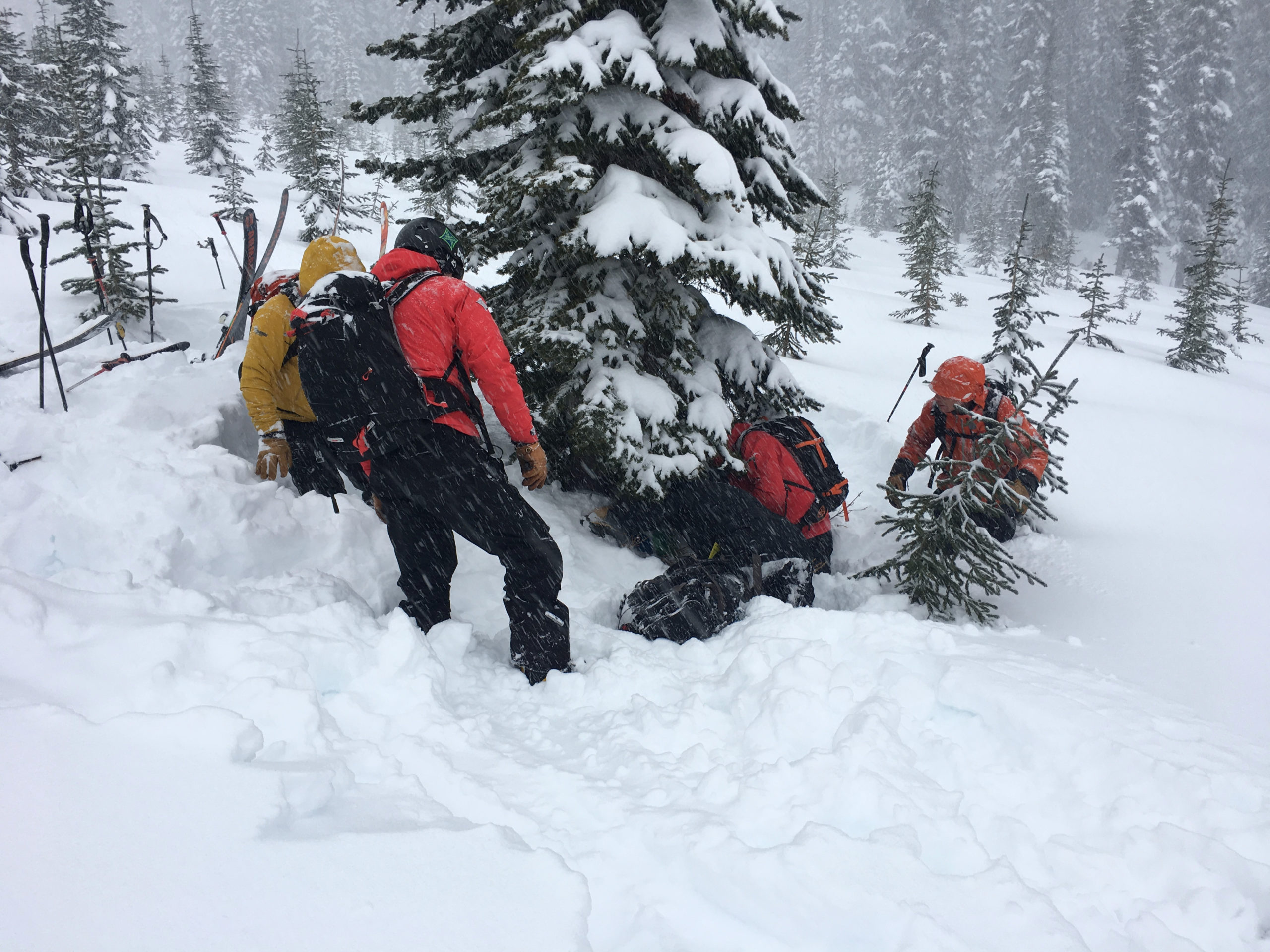- February 6, 2020
Tags
Multiple Tree Well Fatalities in British Columbia
Tragically, two people died in separate tree well incidents last month in British Columbia. The first was a snowboarder in the Kootenays at Whitewater Ski Resort, and the second a skier at Fernie Alpine Resort. Many parts of British Columbia are experiencing all-time riding conditions, but, unfortunately, the new snow comes with heightened avalanche and snow-immersion risk. Our thoughts go out to the victims’ friends and family.
Each season, several skiers in North America die from suffocation after falling into a tree well or deep, loose snow. Deaths are referred to as snow-immersion suffocation (SIS). Most accidents happen during or after large storms or storm cycles. Victims usually fall headfirst into the void around a tree or an area of deep snow. Being inverted, breathing becomes difficult and loose snow packs in around the victim. Without assistance, they can suffocate.
The odds of self-rescue are slim: 90 percent of volunteers placed in tree wells during experiments could not rescue themselves. The only real chance of survival is getting assistance, quickly, from your ski partners.
Prior to the afore mentioned accidents, my friend and I were touring in the Kootenays, and the risk of a tree-well accident was one of our primary concerns. The Kootenay Boundary region, near Nelson, B.C., has reported steady snowfall since Christmas. Nearby Whitewater Ski Resort reported 143 centimeters (nearly 5 feet) of low density snow accumulation in a single week in January. Fernie Alpine Resort has received 697 centimeters (nearly 23 feet) of snow so far this season.
All this new snow has the attention of local guides, and backcountry ski operations dial-up their strategies to manage the risk and provide additional training for their guests. Whitewater resort features a tree well safety page on their site. If operations are on alert, non-guided groups need to be also.
Powder Cloud recommends visiting Deep Snow Safety to learn more about this hazard, how to mitigate the risk, and what to do if you or your partner has a snow immersion incident.

Here’s what I recommend:
- When planning your tour, discuss tree well and SIS hazards to ensure everyone is aware of the danger. For the downhill legs of your tour, incorporate strategies to manage the risk and improve incident response
- During your tour, check in with the group. Continue to evaluate and discuss the hazard. Ensure your group understands and follows the plan.
- Your risk management and incident response should consider the following:
- Ride in control, and give tree wells a wide berth. Don’t look at the trees when skiing; look at the open spaces.
- Ride or ski with a partner and keep your partner within sight at all times.
- Many operations employ a tail guide. You can utilize this same technique. Have an advanced backcountry skier go last and be uphill in case of an accident. Utilize radios to maintain communication with the tail guide and other members of your group.
- A victim will not be able to self-rescue. You need to be close to your partner (within sight) in order to rescue him or her.
- It’s ideal if you’re above or beside the victim. (If you are below your partner when they have an accident, it might take more time than they have to put your skins on, ascend, and dig them out.)
- The victim might not be able to communicate, or you might not be able to hear them. If you are both wearing avalanche transceivers, you can use it to locate the victim.
- Two-way radios are essential. Backcountry ski operations consider them mandatory for all guides and guests. Radios have been successfully used during tree-well rescues.
- Don’t make fun of the person with a bright orange whistle fastened to their pack’s shoulder strap. This is a great tool to direct rescuers to your location.
- Click here to understand what to do if you or your partner goes down.
Through backcountry skiing, Paul Rogers has found incredible happiness, lasting friendships, and the opportunity to traverse the snowscape across Europe and North America. He founded Powder Cloud to help others safely find the same.



